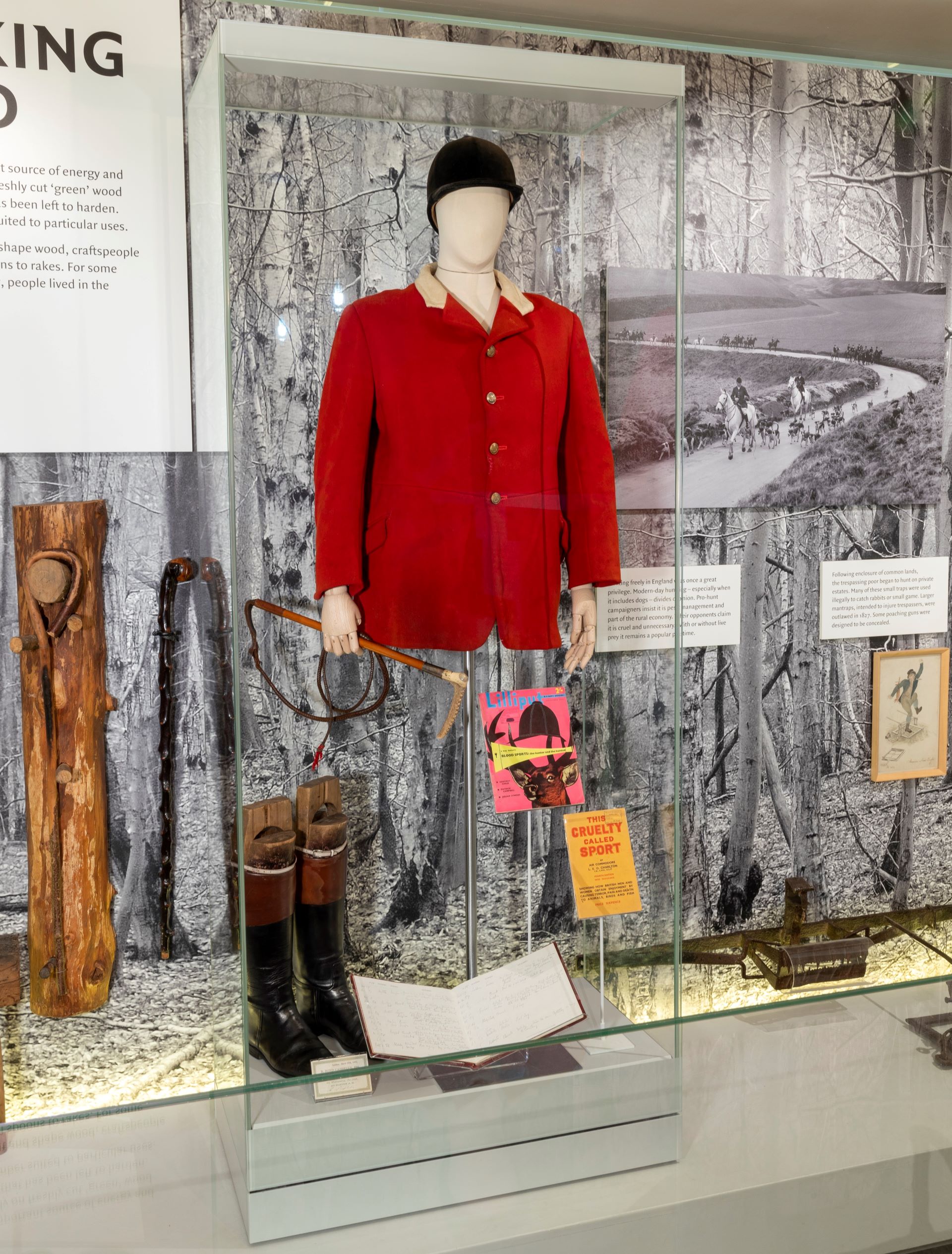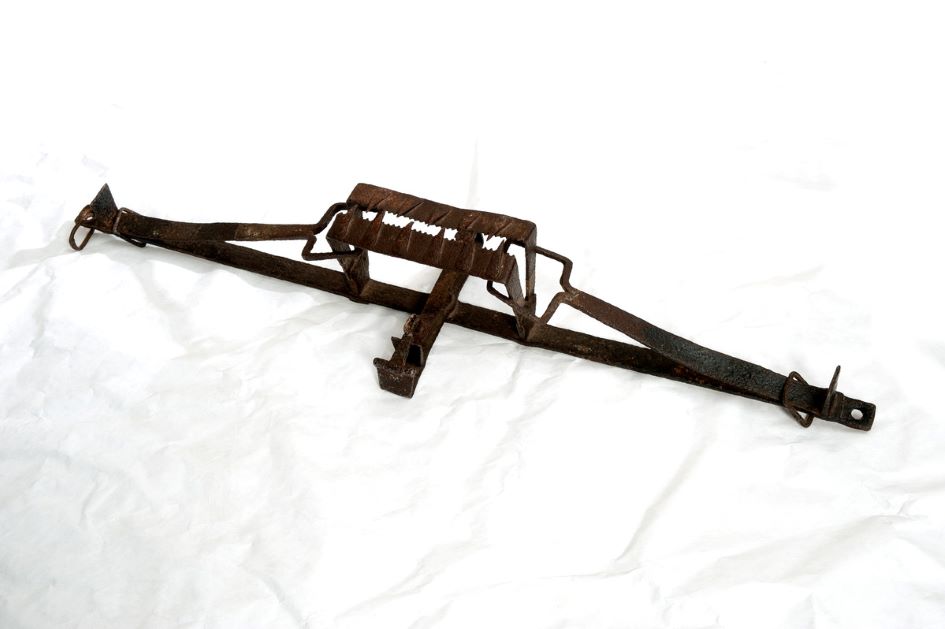On the Hunt Case 2
Tap the yellow hotspots to see more information on the selected object.

Man trap
Coat
Meet card

Man trap
Traps such as these were used to deter, harm and capture poachers attempting to enter a landowner’s territory. 1810 – 1830 saw the introduction of severe anti-poaching laws, suggesting a rise in poaching around this time and the start of an ‘arms-race’ of debilitating traps and tools of self-defence between poachers and landowners. This trap was used in the area around Freefield Hall, Lichfield.
MERL 62/403

Coat
This red coat was worn by a horseman of the South Dorset hunt in the mid 20th century. It has the buttons and white collar typical of this outfit. The convention of foxhunters wearing red coats is thought to derive from the early 18th century, with the red colour designed to mask the blood stains of the hunt. Traditionally, brass buttons were awarded to members of the hunt who had been particularly helpful or dutiful.
MERL 2013/24

Meet card
Hunts with dogs were generally organised well in advance, and this 19th century meet card details the plan for such a meeting. This group – B. Bond Cabbell’s Hounds – would have kept its own dogs, as these were kept by each regional ‘Hunt’, not by individuals.
The use of dogs to catch foxes was first recorded in around 2500BC in Assyria and Egypt. It became an organised activity in the 17th century in Britain, and contributed to the development of sports such as steeplechase.
When hunting with dogs was banned in the early 2000s, a number of protests occurred in London. See this online exhibition to find out more.
MERL 51/453